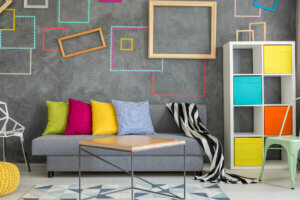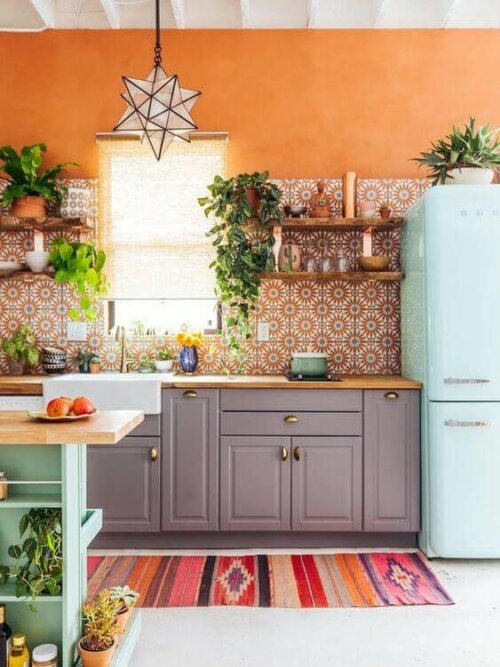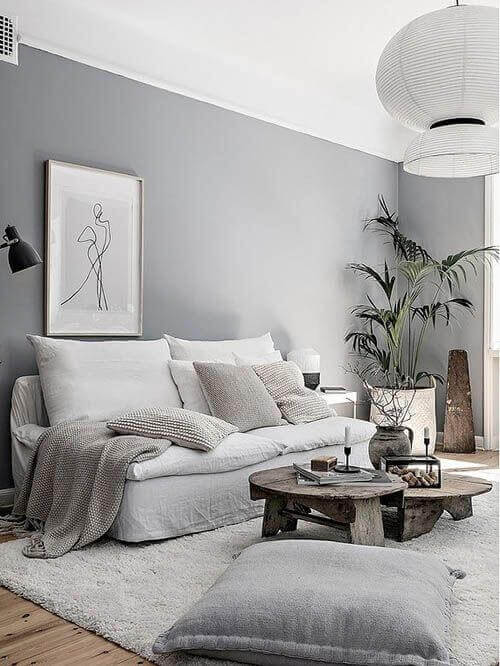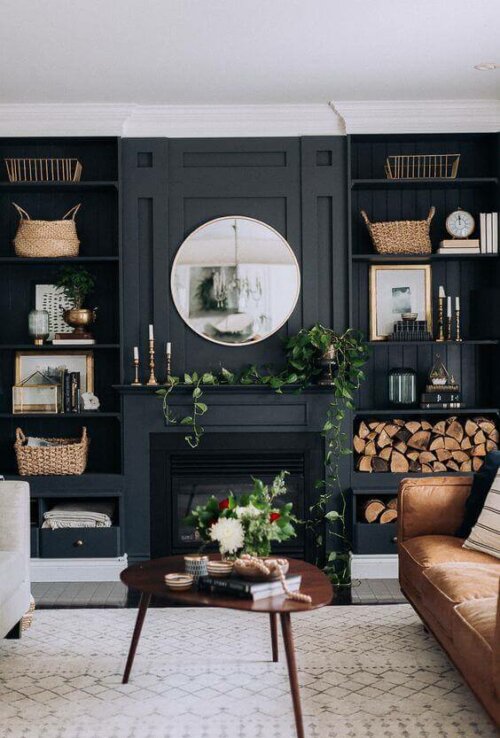The Impact of Room Colors on Our Mood

The room colors we use convey a specific sense of aesthetics, but how do these colors impact our mood? Every color has a meaning and, depending on the intensity, they can contribute directly or go unnoticed.
What’s clear is that the mixing of various colors can help generate internal harmony. However, there should always be a close relationship with the rest of the furniture and decor in general.
Firstly, in the interior design world, the shape must be linked to color. These concepts are connected to each other and feed off each other. Therefore, color influence can be very interesting and offer character, personality, and different meanings.
Room colors and their impact on our mood

There’s no doubt color aesthetically contributes to a room. It makes up the content and contributes to a certain ambiance. In fact, the type of room often influences the color choice.
Normally, in living rooms, we tend to use neutral colors that don’t excessively stand out. As this is a room where we spend long periods of time, we shouldn’t create unease, but tranquility. So colors like grays, whites, and earthy colors tend to be common.
We tend to choose more personalized colors in the bedroom: green, blue, pink, etc. Depending on tastes, we choose colors that represent us the most. In addition, they can influence comfort and relaxation.
– Our personality is usually related to certain colors.-
Three ways to relate colors to the environment

In living rooms, kitchens, and dining rooms the colors must be directly related to the furniture. This plays a very important role, to the point of becoming the main feature. Therefore, pay attention to the application of tones according to the function the room has.
If we use the room for resting and relaxing, earthy tones tend to significantly contribute more. Colors that are more intense (red, green, and yellow) can wake us up and keep us connected.
Kitchens should be functional places where colors can be more prominent. We usually find them in white, offering purity and cleanliness, and highlighting the hues of the kitchen.
The dining room is where aesthetics can be worked on in a more comfortable and peaceful way. It’s all about creating harmony with the chairs and the table. For this reason, lighter tones of a specific color can be more pleasing to the eye.
Colors transmit pure feelings. They’re indispensable for using as a base and setting the mood.
Neutral room colors – simplicity and functionality

Neutral colors are a good choice as they fit perfectly in any room. However, when combining colors in the home we must be careful as clashes can impact our mood.
For example, the use of grays combined with bold shades such as red doesn’t usually go well, neither do oranges with blacks, or yellows with dark blues.
In the background, neutral tones provide simplicity and don’t usually cause problems. They’re functional and, in turn, they’re used in modern, contemporary, and minimalist decor.
The severity of darker colors

Strength and severity can be reflected through colors. For this, it’s best to choose those that best suit this serious style.
Similarly, some colors such as black, dark gray, bottle green, or dark blue can be a perfect supports for internal decoration where the main aesthetic component is seriousness.
Furthermore, normally, dark rooms offer a very solemn, sensible, and formal character. It’s a way of not risking combinations or creating strong contrasts.
The room colors we use convey a specific sense of aesthetics, but how do these colors impact our mood? Every color has a meaning and, depending on the intensity, they can contribute directly or go unnoticed.
What’s clear is that the mixing of various colors can help generate internal harmony. However, there should always be a close relationship with the rest of the furniture and decor in general.
Firstly, in the interior design world, the shape must be linked to color. These concepts are connected to each other and feed off each other. Therefore, color influence can be very interesting and offer character, personality, and different meanings.
Room colors and their impact on our mood

There’s no doubt color aesthetically contributes to a room. It makes up the content and contributes to a certain ambiance. In fact, the type of room often influences the color choice.
Normally, in living rooms, we tend to use neutral colors that don’t excessively stand out. As this is a room where we spend long periods of time, we shouldn’t create unease, but tranquility. So colors like grays, whites, and earthy colors tend to be common.
We tend to choose more personalized colors in the bedroom: green, blue, pink, etc. Depending on tastes, we choose colors that represent us the most. In addition, they can influence comfort and relaxation.
– Our personality is usually related to certain colors.-
Three ways to relate colors to the environment

In living rooms, kitchens, and dining rooms the colors must be directly related to the furniture. This plays a very important role, to the point of becoming the main feature. Therefore, pay attention to the application of tones according to the function the room has.
If we use the room for resting and relaxing, earthy tones tend to significantly contribute more. Colors that are more intense (red, green, and yellow) can wake us up and keep us connected.
Kitchens should be functional places where colors can be more prominent. We usually find them in white, offering purity and cleanliness, and highlighting the hues of the kitchen.
The dining room is where aesthetics can be worked on in a more comfortable and peaceful way. It’s all about creating harmony with the chairs and the table. For this reason, lighter tones of a specific color can be more pleasing to the eye.
Colors transmit pure feelings. They’re indispensable for using as a base and setting the mood.
Neutral room colors – simplicity and functionality

Neutral colors are a good choice as they fit perfectly in any room. However, when combining colors in the home we must be careful as clashes can impact our mood.
For example, the use of grays combined with bold shades such as red doesn’t usually go well, neither do oranges with blacks, or yellows with dark blues.
In the background, neutral tones provide simplicity and don’t usually cause problems. They’re functional and, in turn, they’re used in modern, contemporary, and minimalist decor.
The severity of darker colors

Strength and severity can be reflected through colors. For this, it’s best to choose those that best suit this serious style.
Similarly, some colors such as black, dark gray, bottle green, or dark blue can be a perfect supports for internal decoration where the main aesthetic component is seriousness.
Furthermore, normally, dark rooms offer a very solemn, sensible, and formal character. It’s a way of not risking combinations or creating strong contrasts.
All cited sources were thoroughly reviewed by our team to ensure their quality, reliability, currency, and validity. The bibliography of this article was considered reliable and of academic or scientific accuracy.
- Atkins, Caroline:Colorea tu hogar, Londres, Ceac, 2003.







